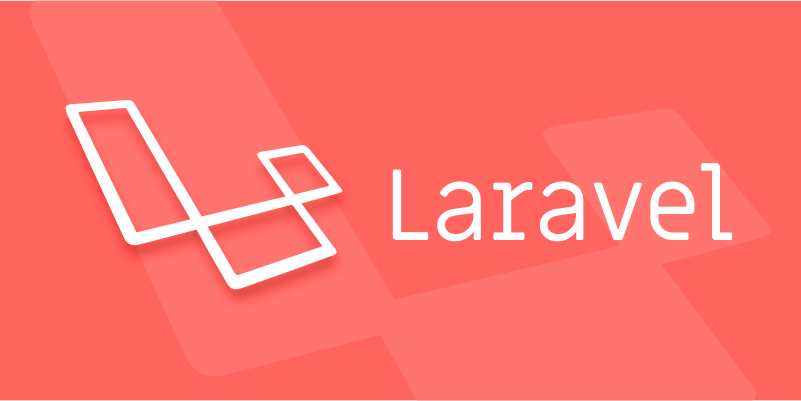There are four common ways to handle form verification in Laravel, which are suitable for different scenarios. 1. The validate() method in the controller is suitable for small and medium-sized projects, which can quickly verify fields and automatically redirect error messages; 2. The form request class is suitable for complex logic or multiple reuse scenarios, making the controller more concise and easy to maintain; 3. Custom verification rules can be implemented through closures or Rule classes, and can customize error prompts to improve user experience; 4. The front-end displays error messages through the Blade template, which can display field errors individually or summarize all errors. Choose the appropriate method according to the complexity of the project, and the verification rules should be as clear and complete as possible.

Form validation is a very common requirement in Laravel in development, and Laravel provides a variety of ways to deal with this problem, which is both flexible and powerful. The key is to understand which method should be used in different scenarios and how to organize the code to make the logic clearer.

1. Use validate() method in the controller
This is the most common and most suitable method for small and medium-sized projects. Calling validate() method directly in the controller can quickly complete the verification of the field, and can automatically redirect back to the form page with error information.
For example:

public function store(Request $request)
{
$request->validate([
'name' => 'required|string|max:255',
'email' => 'required|email|unique:users',
]);
// Continue to process after verification}suggestion:
- Write the rules clearly and clearly to avoid omissions.
- If the form fields are large or reused in multiple places, consider extracting them into the form request.
2. Use Form Request
When your form verification logic is complex or needs to be reused between multiple controllers, it is recommended to use the form request class . You can generate a request class specifically for verification through the Artisan command:

php artisan make:request StoreUserRequest
Then define the validation rules in rules() method of this class:
public function rules()
{
Return [
'name' => 'required|string|max:255',
'email' => 'required|email|unique:users',
];
}It's also easy to use in a controller:
public function store(StoreUserRequest $request)
{
// Verification has been passed, the data is processed directly}benefit:
- The controller is simpler and the responsibilities are clearer
- It can handle authorization, precondition judgment and other logics (such as
authorize()method) - Easier to test and maintain
3. Custom verification rules and error prompts
Sometimes the rules provided by the system are not enough, such as you need to verify that a field meets a specific format or is associated with other fields. At this time, you can use closures or custom rules.
For example:
$request->validate([
'slug' => ['required', 'string', Rule::unique('posts')->where(fn ($query) => $query->where('user_id', auth()->id()))],
]);You can also customize error prompt information in language files to improve user experience:
// resources/lang/en/validation.php
'custom' => [
'name' => [
'required' => 'The name cannot be empty! ',
],
],4. Tips for displaying error messages in front-end
Laravel will bind error messages to session by default, and you can easily access them through the Blade template.
For example, an error showing a certain field:
@error('email')
<div class="text-red-500">{{ $message }}</div>
@enderrorIf you want to display only one summary of all errors, you can do this:
@if ($errors->any())
<div class="alert alert-danger">
<ul>
@foreach ($errors->all() as $error)
<li>{{ $error }}</li>
@endforeach
</ul>
</div>
@endif Basically that's it. Select the appropriate verification method based on the scale and complexity of the project. validate() is enough for small projects. Form Request is recommended to decouple logic for large projects. Try to write the verification rules clearly, don’t be afraid of having more conditions, as this is much easier than finding bugs in the later stage.
The above is the detailed content of How to handle form validation in Laravel?. For more information, please follow other related articles on the PHP Chinese website!

Hot AI Tools

Undress AI Tool
Undress images for free

Undresser.AI Undress
AI-powered app for creating realistic nude photos

AI Clothes Remover
Online AI tool for removing clothes from photos.

Clothoff.io
AI clothes remover

Video Face Swap
Swap faces in any video effortlessly with our completely free AI face swap tool!

Hot Article

Hot Tools

Notepad++7.3.1
Easy-to-use and free code editor

SublimeText3 Chinese version
Chinese version, very easy to use

Zend Studio 13.0.1
Powerful PHP integrated development environment

Dreamweaver CS6
Visual web development tools

SublimeText3 Mac version
God-level code editing software (SublimeText3)
 Working with pivot tables in Laravel Many-to-Many relationships
Jul 07, 2025 am 01:06 AM
Working with pivot tables in Laravel Many-to-Many relationships
Jul 07, 2025 am 01:06 AM
ToworkeffectivelywithpivottablesinLaravel,firstaccesspivotdatausingwithPivot()orwithTimestamps(),thenupdateentrieswithupdateExistingPivot(),managerelationshipsviadetach()andsync(),andusecustompivotmodelswhenneeded.1.UsewithPivot()toincludespecificcol
 Sending different types of notifications with Laravel
Jul 06, 2025 am 12:52 AM
Sending different types of notifications with Laravel
Jul 06, 2025 am 12:52 AM
Laravelprovidesacleanandflexiblewaytosendnotificationsviamultiplechannelslikeemail,SMS,in-appalerts,andpushnotifications.Youdefinenotificationchannelsinthevia()methodofanotificationclass,andimplementspecificmethodsliketoMail(),toDatabase(),ortoVonage
 Understanding Dependency Injection in Laravel?
Jul 05, 2025 am 02:01 AM
Understanding Dependency Injection in Laravel?
Jul 05, 2025 am 02:01 AM
Dependency injection automatically handles class dependencies through service containers in Laravel without manual new objects. Its core is constructor injection and method injection, such as automatically passing in the Request instance in the controller. Laravel parses dependencies through type prompts and recursively creates the required objects. The binding interface and implementation can be used by the service provider to use the bind method, or singleton to bind a singleton. When using it, you need to ensure type prompts, avoid constructor complications, use context bindings with caution, and understand automatic parsing rules. Mastering these can improve code flexibility and maintenance.
 Strategies for optimizing Laravel application performance
Jul 09, 2025 am 03:00 AM
Strategies for optimizing Laravel application performance
Jul 09, 2025 am 03:00 AM
Laravel performance optimization can improve application efficiency through four core directions. 1. Use the cache mechanism to reduce duplicate queries, store infrequently changing data through Cache::remember() and other methods to reduce database access frequency; 2. Optimize database from the model to query statements, avoid N 1 queries, specifying field queries, adding indexes, paging processing and reading and writing separation, and reduce bottlenecks; 3. Use time-consuming operations such as email sending and file exporting to queue asynchronous processing, use Supervisor to manage workers and set up retry mechanisms; 4. Use middleware and service providers reasonably to avoid complex logic and unnecessary initialization code, and delay loading of services to improve startup efficiency.
 Managing database state for testing in Laravel
Jul 13, 2025 am 03:08 AM
Managing database state for testing in Laravel
Jul 13, 2025 am 03:08 AM
Methods to manage database state in Laravel tests include using RefreshDatabase, selective seeding of data, careful use of transactions, and manual cleaning if necessary. 1. Use RefreshDatabasetrait to automatically migrate the database structure to ensure that each test is based on a clean database; 2. Use specific seeds to fill the necessary data and generate dynamic data in combination with the model factory; 3. Use DatabaseTransactionstrait to roll back the test changes, but pay attention to its limitations; 4. Manually truncate the table or reseed the database when it cannot be automatically cleaned. These methods are flexibly selected according to the type of test and environment to ensure the reliability and efficiency of the test.
 Choosing between Laravel Sanctum and Passport for API authentication
Jul 14, 2025 am 02:35 AM
Choosing between Laravel Sanctum and Passport for API authentication
Jul 14, 2025 am 02:35 AM
LaravelSanctum is suitable for simple, lightweight API certifications such as SPA or mobile applications, while Passport is suitable for scenarios where full OAuth2 functionality is required. 1. Sanctum provides token-based authentication, suitable for first-party clients; 2. Passport supports complex processes such as authorization codes and client credentials, suitable for third-party developers to access; 3. Sanctum installation and configuration are simpler and maintenance costs are low; 4. Passport functions are comprehensive but configuration is complex, suitable for platforms that require fine permission control. When selecting, you should determine whether the OAuth2 feature is required based on the project requirements.
 Implementing Database Transactions in Laravel?
Jul 08, 2025 am 01:02 AM
Implementing Database Transactions in Laravel?
Jul 08, 2025 am 01:02 AM
Laravel simplifies database transaction processing with built-in support. 1. Use the DB::transaction() method to automatically commit or rollback operations to ensure data integrity; 2. Support nested transactions and implement them through savepoints, but it is usually recommended to use a single transaction wrapper to avoid complexity; 3. Provide manual control methods such as beginTransaction(), commit() and rollBack(), suitable for scenarios that require more flexible processing; 4. Best practices include keeping transactions short, only using them when necessary, testing failures, and recording rollback information. Rationally choosing transaction management methods can help improve application reliability and performance.
 Handling HTTP Requests and Responses in Laravel.
Jul 16, 2025 am 03:21 AM
Handling HTTP Requests and Responses in Laravel.
Jul 16, 2025 am 03:21 AM
The core of handling HTTP requests and responses in Laravel is to master the acquisition of request data, response return and file upload. 1. When receiving request data, you can inject the Request instance through type prompts and use input() or magic methods to obtain fields, and combine validate() or form request classes for verification; 2. Return response supports strings, views, JSON, responses with status codes and headers and redirect operations; 3. When processing file uploads, you need to use the file() method and store() to store files. Before uploading, you should verify the file type and size, and the storage path can be saved to the database.






